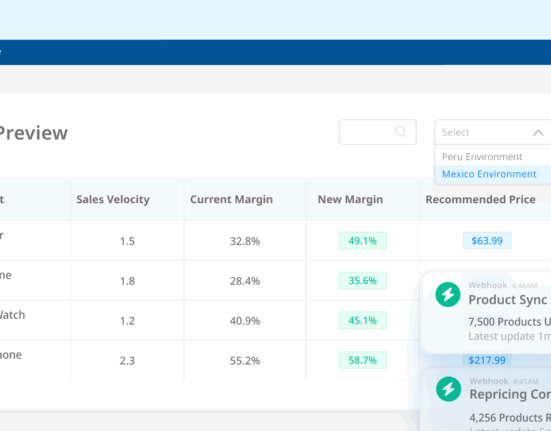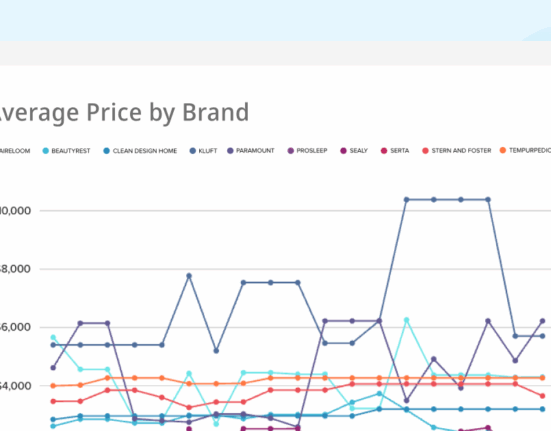The world of sales is constantly changing. If your business has any hope of keeping up, then optimizing your sales process is the way to go.
But optimization is an ongoing ordeal. Even if you have a well-established business and are making decent enough revenue, your company’s future depends on your ability to grow and keep up with your customer base. There is always going to be room for improvement.
What if your business could be making even more sales, and reaching even more customers? Doesn’t this sound ideal?
What Is Sales Optimization?
Sales optimization involves creating a set of strategies for your sales teams that maximizes your revenue potential. By creating guidelines for your team to follow, you ensure that the process is running efficiently and effectively.

Why Is Sales Optimization Important for Your Business?
Done correctly, sales optimization can provide a myriad of benefits for a company, such as:
- Saving time and effort for your sales team
- Maximizing your potential sales revenue
- Improving your sales team management
- These are just a few possibilities. But, with the right strategies in place, your business can continue reaping endless benefits for years to come.
Strategies to Optimize Your Sales Process
So how do you optimize your sales performance?
No. 1: Keep Your Processes Simple
Creating a perfect sales process that won’t ever need to be changed is pretty much impossible, but that doesn’t mean you can’t get close. The ideal sales process should be simple and able to scale with your business as it, and your team, grows. The simpler your processes, the easier they are for your workers to understand and accurately follow.
This means that efficiency will increase, hopefully leading to smoother consumer experiences and more deals won.
On top of this, simpler processes are easier to adapt as needed, while a more complex process can be difficult to dissect or change to fit your business’ needs as it grows and changes goals.
To help ease your processes along, consider incorporating automation into different steps along the way. This way, your team saves some time and effort that can be used to better your sales elsewhere.

No. 2: Automate as Much as Possible
Automation allows your sales team more leeway to focus on their individual talents, leading to higher employee engagement, better consumer relationships, and eventually more overall sales. By streamlining the more menial office tasks and freeing up sales rep time, you can optimize your sales processes while upping your capabilities.
There are many forms of automation technology out there now, but your business should focus primarily on ones that can help with things like:
- Lead reporting
- Sales data collection
- Customer emails (for onboarding, promotions, and the like)
But be wary of automating more than you have to. No matter how streamlined the processes, there will always be parts of selling that require a human touch. Studies show that consumers respond better to meaningful human interactions while shopping. These interactions can help to improve brand loyalty and increase sales.
Sales optimization doesn’t have to mean creating a more complicated or convoluted process. In fact, it’s best that you keep things simple.
Sales optimization doesn’t have to mean creating a more complicated or convoluted process. In fact, it’s best that you keep things simple.
No. 3: Know Your Flaws
When looking at your sales process, it’s easy to lose sight of each individual step. But every move a customer or a sales rep makes throughout the process can be crucial to winning the sale.
By analyzing your data when it comes to calls, meetings, or follow-ups, you can stay on top of any problem areas.
For example, there can be issues with communication or technical issues. If a sales rep fails to return a potential customer’s communication in time, it can lead to a loss in revenue.
It’s important that you know how long your customers are spending at each part of the pipeline. This way, you can get ahead of any issues that may arise before they mount and cause irreparable damage.
It’s all about the data, make sure you don’t let your sales team fly blind.

No. 4: Use Your Data to Improve
It’s important to make sure that the data you are monitoring is tied directly to your company goals. This way, the actions of your team contribute to business growth and it becomes easier to address your problem areas.
When you are constantly monitoring your goals and can better prioritize which challenges to fix first, it makes your workers feel as though their actions have direct impacts and the goals set before them are actually attainable. When you look at the data during team meetings, there will be a higher sense of pride and achievement there, rather than just the numbers.
Specifically, you should be keeping an eye on:
- Activity: What your team is actually doing
- Quality: How your team is performing in the metrics
- Conversion: How successful your team is with their sales
This data should help you see where changes need to be made in the pipeline.
No. 5: Keep Your Team Well Trained
There are many benefits to having a well-trained sales team.
Your workers are the power and driving force behind your company’s effectiveness. Accurate and up-to-date training ensures that your teams feel confident and empowered when interacting with customers.
Plus, trained employees are more likely to feel invested in company success and believe in the products they are selling. Customers will be able to feel this when interacting with your sales reps, possibly increasing your brand’s image.
Because of all this, it’s important that you keep your team constantly trained and up to date with the latest practices. You should never allow your processes to be out-of-date or inaccurate when it comes to current trends or worldly events, as this can lead to a misstep and misrepresentation of your brand, and even a loss in revenue.
To ensure your team can continuously operate at their best quality, you must provide them with the resources to succeed. Software like Wiser’s Retail Execution Management can streamline field team tasks and make it easier to plan routes and prioritize in-store activities.

No. 6: Define Your Ideal Target Customer
By focusing on your ideal customer, you can save your sales team wasted time and effort they might have spent on prospects that have less value for the business.
Selling to customers that aren’t the right fit for your products can lead to a multitude of issues, like:
- Decreased brand loyalty
- Employee fatigue
- Negative brand image
A customer that’s a bad fit likely won’t end up buying from your company more than once, won’t see the true value of your product, and could damage your brand’s reputation with negative reviews.
Instead, create buyer personas using data research to define who your ideal customers are. Then your teams will know exactly what to look for when working with leads, so they focus on the best fits. With the correct marketing tactics, you can hopefully draw in these particular customers from the start, too.
It is better in the long run for your company to create long-lasting and loyal relationships with customers who are ideal for your products.
No. 7: Define Your Goals & Stick To Them
Every company would love an increase in revenue, but what personal goals does your business have that set it apart from the rest?
When considering this, try to avoid focusing only on small or short-term goals, and consider where you hope for your business to be in the future. Long-term revenue streams are more beneficial overall and lead to higher profits and growth. They are also more reliable when compared to short-term streams, which can be unpredictable and dry up quickly and without notice.
Because of this, try to reward events like client renewals, customer anniversaries, or upsells.
On top of this, keep your sights set on what you know—the fundamentals of sales. Following up with customers or running targeted marketing campaigns are always good ideas.
There will always be trends or fads that catch shoppers’ attention, and your strategy should account for these, but they will pass eventually. Constantly changing your strategies to follow these can make your team lose focus. Don’t lose sight of your brand’s foundations.

No. 8: Find and Fix Any Holes in the Pipeline
It’s easy to focus only on the beginning and end of the pipeline while overlooking the steps in-between. Of course, sales managers would be excited by potential leads or closed deals but paying attention to the actions taken throughout is just as important.
Scattered throughout the pipeline are many little victories that lead to the final purchase:
- Email responses
- Call backs
- Meetings
All of these and more can be pivotal to closing a sale and should be closely monitored to ensure they are being executed as smoothly as possible.
If you notice a decrease in sales, these middle stages can help determine where the issue lies. For example, perhaps your team’s problem stems from a low-performing email campaign. Or maybe conversion times are higher than usual and there is an issue with customer relationship building.
Keep a continuous watch on your pipeline, determine where you are losing sales, and focus your energy on patching up those holes. This is the step that can be most crucial to your sales process.
Sales optimization doesn’t have to mean creating a more complicated or convoluted process. In fact, it’s best that you keep things simple.
By working closely with your sales team, staying focused on your goals, keeping good consumer relationships, streamlining the process, and maintaining your pipeline, you’ll reap the reward of more deals closed and higher revenue earned.










2 Comments
Comments are closed.